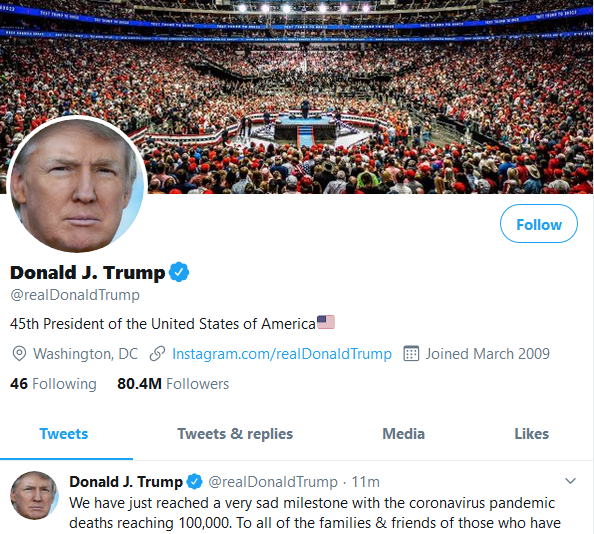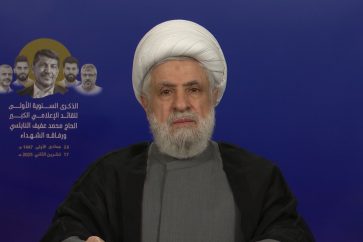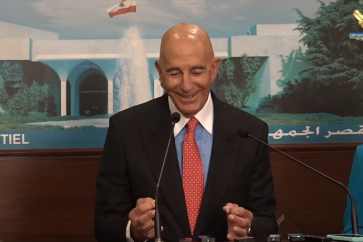Every few months the same debate re-emerges: Should Twitter ban Donald Trump? Usually, it’s because of something particularly egregious, conspiratorial, untrue or geopolitically reckless that the president tweeted. Many of these tweets would result in a takedown or a temporary suspension if they came from a normal user’s account, but Twitter has made an exception for heads of state, citing a “newsworthiness” clause that allows the company to evade responsibility.
The debate gained new relevance this week after Twitter added a link to two presidential tweets that made false claims about mail-in ballots. It was the first time that Twitter had taken a step like this. The link, labeled “Get the facts,” directed users to a page with links to a CNN article about the president’s unsubstantiated claims as well as additional debunking tweets for context. Twitter’s move prompted Mr. Trump to claim that it was interfering in the 2020 election and to threaten to “strongly regulate, or close” the platform down. (It’s not clear he has anything approaching that power.)
What should Twitter do about Mr. Trump’s behavior? I don’t really think it’s possible to “deplatform” the president of the United States — that is, ban him from social media sites to decrease his public reach. If Twitter were to go nuclear it would set off a censorship debate so fierce that the issue would end up in Congress or the courts. It would also place the company in the role where it feels most uncomfortable: acting as an arbiter of truth.
All the same, I think a lot about what might happen if, hypothetically, Twitter’s chief executive, Jack Dorsey, soberly assessed the risks and rewards and second- order effects of Mr. Trump’s lies, trolling and division-sowing, and kicked him off Twitter. Would taking away this particular avenue of communication meaningfully hurt the president? Or would he just get the same attention via Facebook, which seems to be just fine with his conspiratorial slandering and misleading, and where he reaches far more people?
Early research and anecdotal evidence suggests deplatforming is effective in the long term. In recent years, pro-Trump media figures like Milo Yiannopoulos, Chuck Johnson and Alex Jones have been banned from numerous social media platforms for violating rules and their influence has waned.
But there’s something special about Twitter’s influence. Though the audience is larger on YouTube and Facebook, deplatformed pro-Trump figures seem most anguished about losing their 280-character missives. Twitter is the platform of choice not because of reach, but because it provides a unique on-ramp to the mainstream media conversation.
It’s where journalists hang out all day. Spats on Twitter are more visible to newsmakers and more likely to attract attention. The savviest pro-Trump figures learned long ago how to influence the conversation by baiting the press with outrageous commentary or by going up to the edge of violating the platform’s rules. Without a Twitter account, they lose that power and influence.
That won’t be the case for Mr. Trump. As his Covid news conference podium meltdowns have illustrated, the man can make news and sow chaos quite well without a smartphone. The press will cover the president’s musings regardless of where he airs them.
But it’s hard to imagine the president wouldn’t be at least a little bit kneecapped by a Twitter ban. Yes, his Facebook posts would likely be shared on Twitter all the same. It’s unclear whether the impact would be meaningful and it doesn’t seem likely to change our toxic political climate. But losing access to Twitter would introduce at least some friction to the president’s current strategy of using late-night tweet storms to provoke journalists.
This media dynamic is rarely mentioned in the larger debate about Twitter banning Mr. Trump, but it ought to be. And it seems a damning critique of the press that a primary reason a Twitter ban would hurt the president is that he’d lose a good deal of amplification by journalists.
“The strategy of power now is not to dominate the whole narrative,” Peter Pomerantsev, a senior fellow at the London School of Economics and the author of “This Is Not Propaganda: Adventures in the War Against Reality” told me recently. “It’s to polarize citizens and construct a very potent worldview and to alienate them from the truth. When journalists speak truth to power they’re by nature giving the powerful the opposition they want.”
Naturally, media outlets and reporters, not wanting to be bullied or discredited, adopt an adversarial approach. This leads to some great, important journalism but also a fair amount of grandstanding, which then become ammunition for the president and his supporters.
Which is to say that it’s a cycle that requires participation from all parties: the president (who initiates it), Twitter (which tolerates it) and the media (which amplifies, frequently to the president’s advantage). Removing one participant gums up the cycle, but does not stop it outright. To do that would require a much larger re imagining of our larger media ecosystem, from the platforms’ architecture to how journalists cover the president.
This is not to excuse platforms like Twitter, Facebook and YouTube, which prioritize engagement above all and have redefined what it means to be a good presidential candidate. They give a natural advantage to the loudest, most incendiary and shameless personalities who seek to divide. They’ve elevated fringe political movements as well as leaders from the Philippines’ president, Rodrigo Duterte, to Mr. Trump. The platforms alone didn’t elect these leaders, but they did provide them with nearly unlimited attention, an invaluable in-kind campaign contribution.
The damage — at least for this generation of world leaders — is nearly impossible to reverse. Banning Mr. Trump from Twitter, just like fact-checking one or two of his lying tweets, might feel good and might make the platform feel less toxic for a while. But it’s still just tinkering on the margins. It won’t fix the deeper structural problems that have created our information apocalypse. For that, we’re going to need a far bigger reckoning — one that certainly includes but also goes well beyond the platforms.
Source: The New York Times




